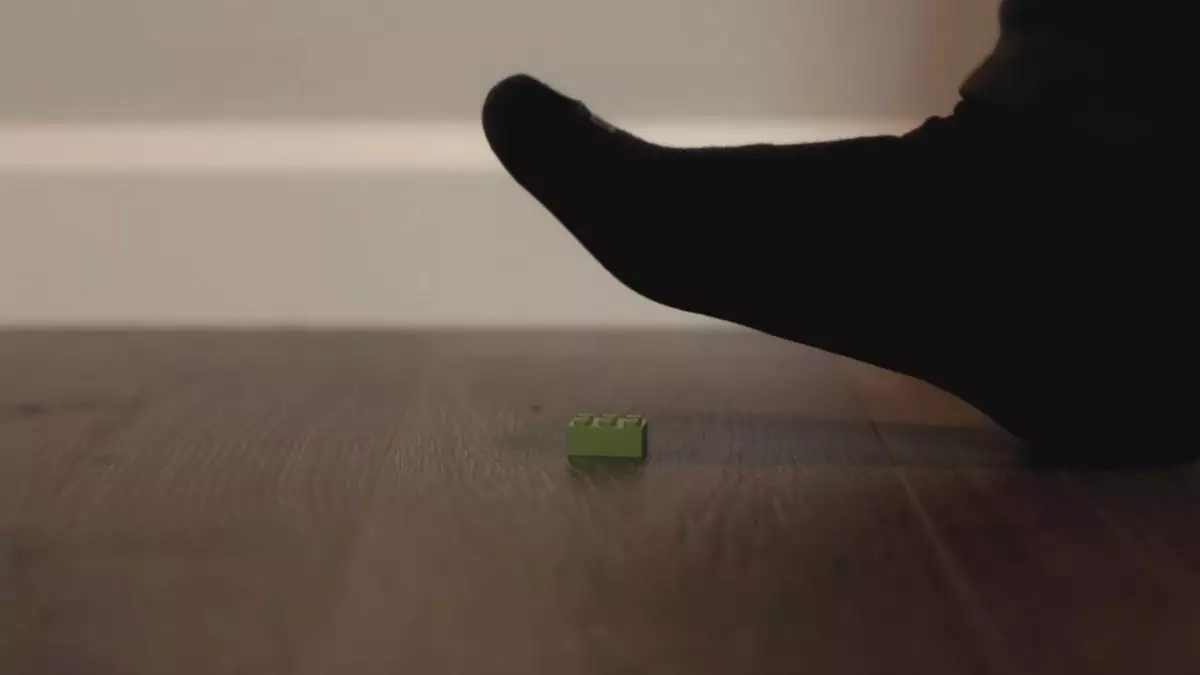Human curiosity knows no bounds, and sometimes, seemingly trivial questions can lead to fascinating explorations. One such inquiry that has captivated the mind of YouTuber Nate Scovill is the age-old question of which Lego piece inflicts the most pain when stepped upon. While many might consider this a frivolous topic, Scovill brings a scientific rigor to the table, transforming playful agony into an experimental pursuit. His project embodies an intriguing blend of humor, creativity, and scientific inquiry, providing an entertaining yet informative glimpse into the world of pain assessment via toys.
Setting aside the potential for personal injury, Scovill designs a test rig to assess the painfulness of various Lego pieces. The decision to circumvent direct foot involvement—due to personal modesty connected to the belief that he would end up on a website cataloging feet—speaks to a cultural phenomenon while also adding a layer of humor to the scientific endeavor. Rather than embarking on a straightforward evaluation through personal experience, he meticulously constructs an apparatus that simulates his foot’s weight, employing an arm that drops onto assorted Lego bricks equipped with cardboard to gauge the impact.
The humor inherent in the experiment, tinged with a desire for thoroughness, is palpable. Scovill’s emphasis on “scientific integrity” enables viewers to appreciate the duality of the project: it’s part genuine scientific exploration, part comedic escapade. By prioritizing humor, he effectively engages a broader audience, inviting everyone, whether they appreciate science or not, to settle in for the ride.
Initial Findings: The Unexpected Contenders
As the tests commence, the findings yield some surprising contenders for the title of “Most Painful Lego.” One standout is the wizard’s hat, which, due to its pointed design and stable base, registers unexpected levels of pain. The playful juxtaposition of a typically whimsical object with the grim reality of pain—paired with the unexpected realization of its hurt-inducing capabilities—highlights the fun yet brutal intersection between childhood play and adult realities.
Yet, it’s the old Lego wheel that truly horrifies Scovill. Featuring an embedded metal axle designed for functionality, this piece is capable of causing severe damage to unsuspecting feet, a potent reminder of the hazards hidden within even the most innocuous children’s toys. His commentary on the potential rusting of the metal axle serves as a humorous aside, further emphasizing the lengths to which he goes to highlight the perils of stepping on Lego.
Culminating in Catastrophe: The Ballistics Gel Foot
Continuing the experiment, Scovill introduces an element from the realm of myth-busting: a ballistics gel foot. This addition lends an air of authenticity, replicating the anatomical structure of a foot to enhance the experimental outcomes. However, his journey takes a comedic turn when unintended mechanical failures disrupt the integrity of his setup, advocating for a certain degree of chaos inherent in any scientific venture.
In an unexpected twist, the ballistics gel foot proves its vulnerability against the sharpness of Lego, leading to an outcome familiar to anyone who has dared traverse a realm littered with Lego bricks. This climactic moment is not merely a failure; rather, it underscores the shared trauma countless individuals carry from childhood playfulness.
Ultimately, Scovill’s exploration transcends the initial query about Lego-induced pain, serving as a larger commentary on how play and pain coexist in human experience. The blend of scientific method and humor transforms a mundane inquiry into a compelling study. This endeavor encourages the audience to reflect on shared experiences from youth, revealing that the pain of stepping on Lego is a rite of passage familiar to many.
Moreover, this quirky scientific pursuit serves as a reminder that not all experiments need to be serious; a lighthearted approach can breathe life into even the most unconventional topics. Whether jesting about the threats posed by minute plastic figures or examining the scientific principles underpinning discomfort, Scovill’s project ultimately champions curiosity, creativity, and the playful spirit of exploration.

